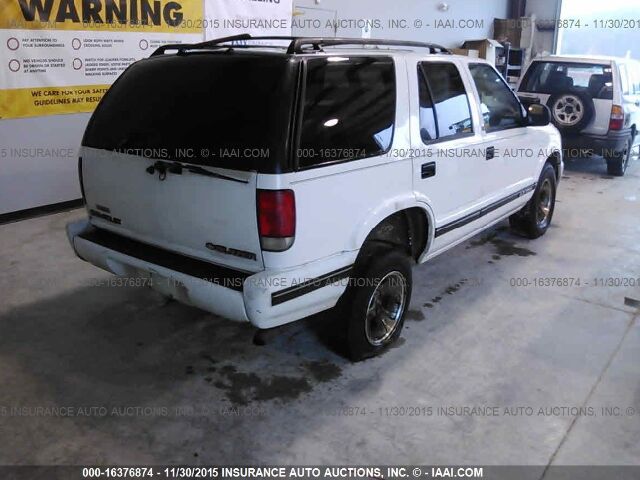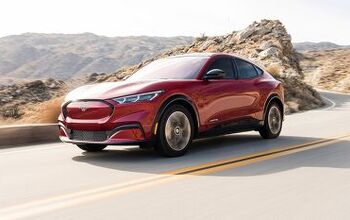These Are the Long, Rough Roads Traveled by Title Loan Cars

Many people rely on title loans when money is tight, regardless of their infamous predatory nature and high interest rates. However, getting that loan is much like playing Russian Roulette — and with similar odds. According to a recent PEW study, one out of every nine title loans results in a repossession, with the titled vehicle eventually heading to auction.
Recently, I received a notice that a large title loan vendor was to auction off over 500 vehicles. My curiosity got the better of me. Armed with the auction run list and a VIN history tool, I decided to take a look at what ends up at these auctions and how they get there.
Pulling up the auction run list showed a total of 549 vehicles available for sale. Most of the vehicles were older, had higher mileage or a combination of both. There were only nine vehicles wearing less than 100,000 miles, making up two percent of the total vehicles available on the run list. The 150,000+ mile group was the largest by far and contained 358 vehicles, accounting for 65 percent of the vehicles in the auction. There were also 110 vehicles that were listed as exempt or mileage unknown. These vehicles were exempt either because they were over 10 years old or had an odometer that was not accessible.
All of the vehicles are listed with fairly low “buy it now” prices that allow qualified purchasers to purchase the vehicles before the auction begins. Title loan companies are able to set such low prices since the amount those companies have invested in each title is only a fraction of the actual market value. Most title loans average around $1,000 and the amount loaned is usually less than 25 percent of the value of the vehicle used as collateral, according to the PEW study. If a vehicle is repossessed, the title loan companies will set a price that will cover the principal of the loan — and possibly some of the lost interest if the market allows it — in order to move the metal quickly. The annual interest rates on these loans can be as high as 300 percent and loans can go as low as $100, so there are vehicles listed for as low as $200 plus auction fees.
One vehicle, a 1995 Chevrolet Blazer, currently shows 271,285 miles. Pulling up its history, we see it shows up at auction in December 2011 with 199,683 miles, then it’s sold with a lien attached in February 2013. Since it had almost 200,000 miles at the time, it is highly unlikely any traditional lending institution would have written a loan for it, meaning this loan was almost certainly processed by a subprime lender. The February sale comes during one of the bigger months for subprime and “Buy Here Pay Here” dealers as many potential customers are receiving tax returns that can give them enough money for a down payment on a new-to-them car.
The Blazer’s owner was immediately in the hole since they were likely taking out a loan with an annual percentage rate of 30 percent for a vehicle that was only worth its weight in scrap. We see three more liens reported on the vehicle with the last one hitting in October of this year. The vehicle’s owner could have taken out multiple title loans or refinanced his loan, the last one being too expensive to cover. Since the vehicle was not worth more than $300 or $400, they would have only been able to get a loan for $150 or so, which would have cost them double or triple the original amount once interest was added. The owner may have been in a tight situation or the car could have broken down, making default a more affordable proposition. Due to the mileage and condition, it’s next stop for this Blazer is likely a salvage yard.
The majority of the vehicles on the list follow a similar pattern: high-mileage domestics between 10- to 20-years old with cosmetic damage. However, there are a few exceptions, like this 2002 Mercedes Benz S500 that shows a last reported mileage figure of 87,000 in September of this year.
It started its life as a lease in the community of Woodbury, NY in 2001, like many other luxury sedans. A year later, it was turned in and auctioned off. The next owner kept it for two years and sold it once the 36,000 mile factory warranty was up. The third owner kept it for three years, but lost it when it was first repossessed in late 2007 with 68,354 miles. The car bounced around Brooklyn for the next few years before finally ending up in Newport News, VA where its last owner took out a title loan against it in September of this year. It now sits with a failed air suspension and a $1,000 preliminary bid, destined for a “Buy Here Pay Here” lot — and quite possibly a third repossession.
The youngest member in the bunch is a 2013 Dodge Ram 1500 with a V-6 engine and only 39,380 on the clock. It’s listed with a clear Texas title and a $13,000 “buy it now” price. This may seem like a great deal, but its history tells a different tale.
The truck was sold new in early 2013 and its owner only had it for only a year before it was wrecked and deemed a total loss at 12,200 miles in February 2014. It was rebuilt and registered in June of that year and went on to serve its second owner. It had its second accident in July of this year, but was able to pass the Texas safety inspection in August. The lien from the title loan company was reported in September and the truck was repossessed soon after. The pictures show a slightly misaligned rear bumper. Other than that, the truck looks clean and will likely end up on a dealer lot.
Sorting by the highest mileage gives us an unexpected example: a 2006 Ford Five Hundred that has achieved 412,983 miles. It’s first significant event after purchase is a severe accident with left rear impact in 2010. The original owner fixed it up and drove it all the way to 296,893 miles in February 2013, at which time it was picked up by a second owner. That purchase shows a lien reported. At almost 300,000 miles, it has to be a subprime loan like our Blazer example above. The history is fairly quiet after that point with standard renewals until the recent repossession. Although the Five Hundred has proven resilient to this point, it almost certain to end up at a salvage yard due to current mileage.
Most of the other cars I checked on the run list followed a similar path where they spent a few years in the mainstream market before ending up at a subprime dealer. Some of them experience accidents that should leave them with a branded title, but there are loopholes that allow the title to be washed. Others live a long life with their first owners before reaching the subprime market. The second and third owners of these vehicles are usually underwater as soon as they buy the vehicle and the title loans just put them further into debt.
[Image credits: Top – Paul Sableman/ Flickr/ CC BY 2.0; Odometer – The Car Spy/ Flickr/ CC BY 2.0; Cars – Insurance Auto Auctions, Inc.]

More by Bozi Tatarevic
Latest Car Reviews
Read moreLatest Product Reviews
Read moreRecent Comments
- FreedMike I guess there's no Rivian love for Mitsubishi Mirage owners. Darn.
- MaintenanceCosts I already have one EV but lower prices might make me a bit more likely to replace our other car with another one.
- FreedMike I'd take one of these with fewer miles, or the last-gen V90 (NO Cross Country frippery, thanks), which was a lovely car.
- 3-On-The-Tree I had a 69 Thunderbird with a 429 and it did the same thing.
- Lou_BC No. An EV would have to replace my primary vehicle. That means it has to be able to do everything my current vehicle does.









































Comments
Join the conversation
Hey Bozi, Pew, oddly enough, is a name and not an acronym. If you're rich enough you can set up foundations and trusts that carry your own name no matter how weird it is. Thanks for the informative article, which confirmed some suspicions I had.
Nice slam against these loan companies. The problem here is that the companies are not predatory - they don't chase down people and force them to do jack. Once you are an ADULT, you are RESPONSIBLE for your stupidity and lack of judgment. No one forces you to go this route. Perhaps if you had lived below your means and actually saved money, you'd have a bit of cash to fall back on! I feel no sorrow for idiots who lose their cars and end up paying through the nose for their mistakes.